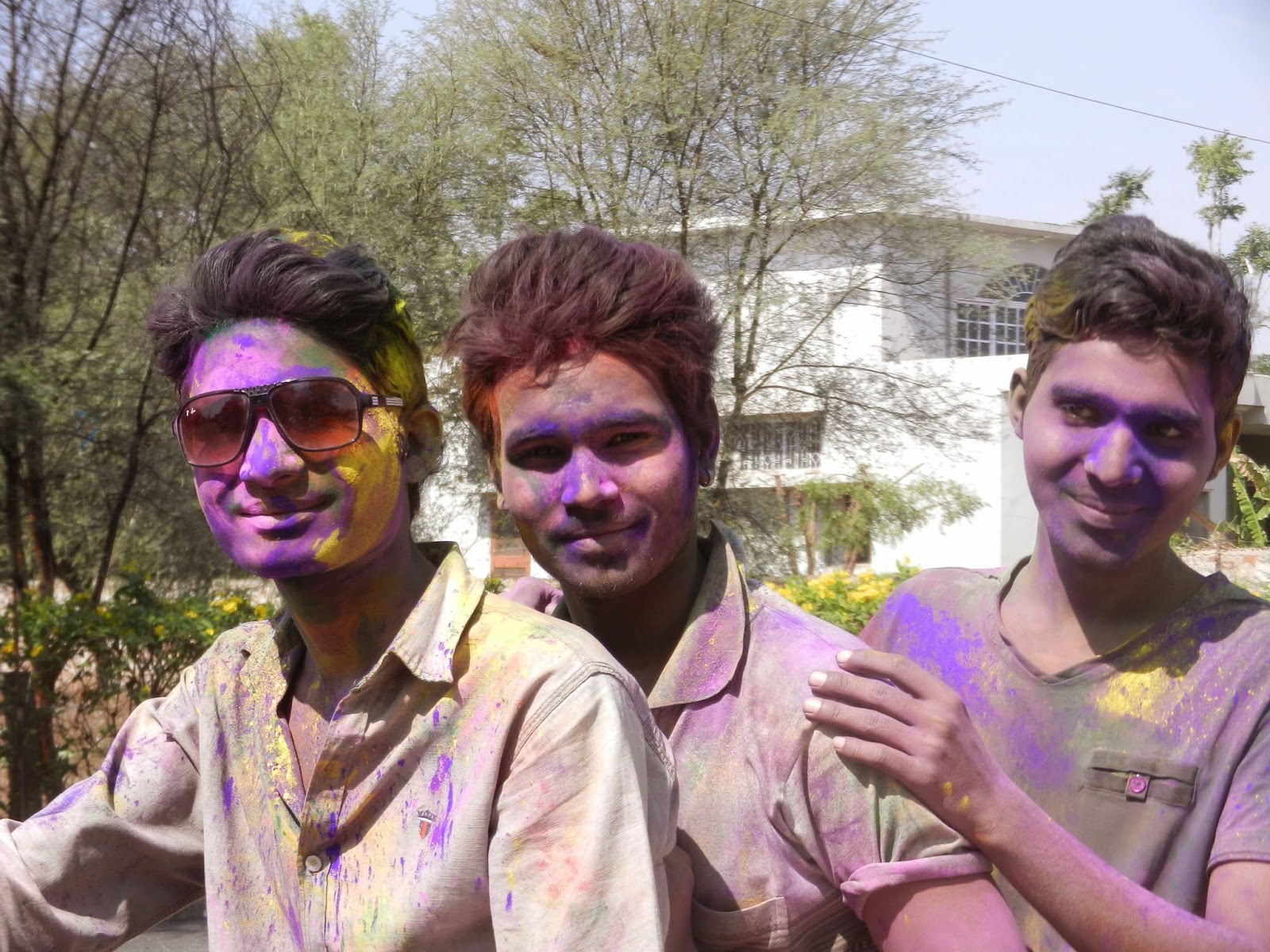So says our guide Amir. To us, it sounds like we’re getting
ready to rumble with our nemesis from the nearby parochial school. But Holi is much more fun and more colorful
than a rainbow.
I’ve been fascinated with Holi since I first saw it as an
Amazing Race challenge. In fact, we
built our trip around the opportunity to “play the Holi.” Holi is the Hindu and
Sikh equivalent of Carnivale with a bit of Mardi Gras thrown in. Everyone participates in colorful Holi fun by
celebrating and throwing colored powder on each other. Not little bits of
color- handfuls and handfuls of bright color! Bonfires dot the roads, painfully
close to nearby houses and structures. These serve as gathering spots so
friends can plan their frivolity.
It’s a day when many Indians get wild and get a bit tipsy. Imagine
scooters packed with riders covered from head to toe in purple, orange and
green dye. Some folks don white outfits and coat their skin and hair with oils
so they don’t ruin their good clothes and skin with the dyes. Imagine a hearty
game of tag on colorful steroids.
We started the day in Jaipur visiting the Amber Fort via
elephant ride before Holi got rolling. We then got a final bit of shopping in, enjoyed
local Indian fare, cultural dancing, and my personal favorite, elephant
decorating. Their skin is soft, dry and coated with countless wrinkles and wiry
hairs. Their eyes seem to look deep into
your soul.
I know personally that it took more than a rough loofah to
get the green off my back. Most folks are tuckered out, smashed and just plain
Technicolor by mid-day that they are ready for a bath and a nap. Happy Holi!!!!






